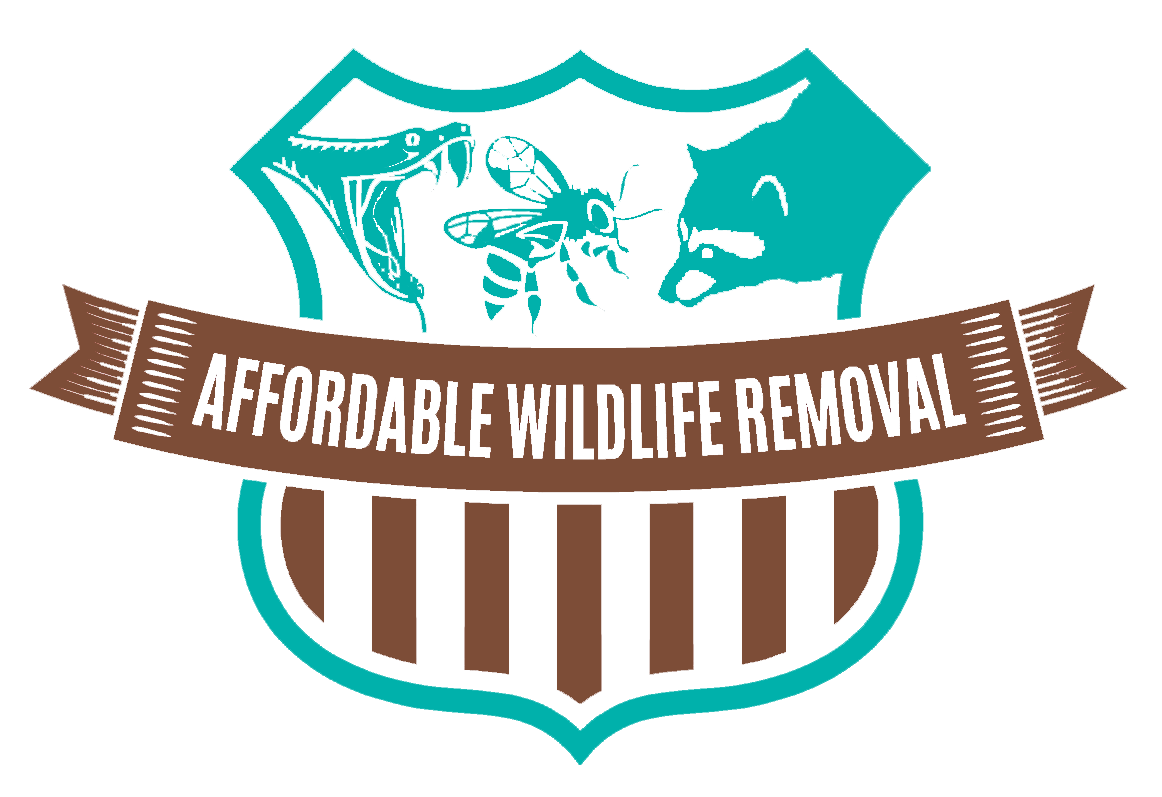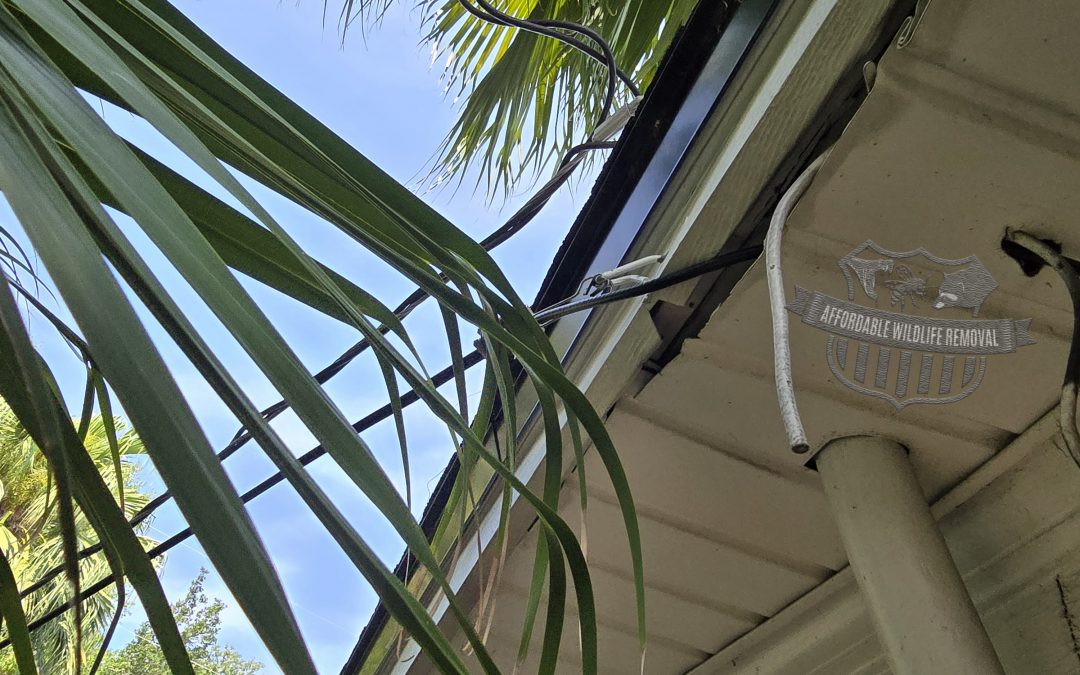Rat Highways and Roof Raiders: How Wildlife Turns Your Yard Into an Attic Access System
Ever wonder how rats, squirrels, and other critters manage to end up in your attic when your walls look sealed tighter than Fort Knox?
Here’s the truth, they aren’t tunneling through concrete, they’re taking the sky route.
In Florida, we see it all the time. A squirrel hops from a palm tree to a power line, strolls across your pool screen like it’s a balance beam, and disappears under your soffit before you’ve even finished your morning coffee. This is a prime example of how wildlife uses power lines to navigate your property.
It’s impressive… until you realize that little acrobat just turned your attic into his Airbnb.
Welcome to the world of wildlife highways, the interconnected system of trees, fences, pool screens, and utility lines that turn your property into a freeway for rats, squirrels, and raccoons.
Let’s break down how they do it, why it happens, and how Affordable Wildlife Removal keeps them grounded.
Understanding How Wildlife Turns Your Yard Into an Attic Access System
Think of your property like a city, only instead of streets, these animals use elevated routes.
-
Utility lines: To a rat, a power line is a tightrope. They’ll travel those lines all night long without breaking a sweat.
-
Trees: Branches are bridges. Any limb hanging over your roof is basically an open door.
-
Fences: Especially wooden ones that connect near the roofline or screen enclosure frames.
-
Pool screens: One of the most common access points in Florida. Screens sit just high enough for rodents and squirrels to jump to soffits or vents.
-
Cable and AC chase lines: These often run straight into attics, and if there’s even the smallest gap, that’s all they need.
If your home connects to any of these, congratulations! You’ve got wildlife infrastructure.
Rats, Squirrels, and Raccoons: The Frequent Flyers
Each species uses these aerial highways differently, but the goal is the same: get warm, get safe, and get inside.
Rats: The Night Shift Crew
Rats love utility lines. They have incredible balance, and their tails act like stabilizers. You might not even notice them unless you’re outside late at night with a flashlight, look up and you might catch one sprinting across your power line like an Olympic gymnast.
Once they reach your roof, they’ll test every weak spot they can find: ridge vents, gable vents, AC chase gaps, and roof returns. It doesn’t take long before they find one big enough to squeeze through, about the size of a quarter.
Rats don’t just stop there. Once inside, they chew wiring, tear insulation, and leave droppings behind like it’s confetti at a parade.
Squirrels: The Daytime Daredevils
If rats work the night shift, squirrels take over during the day. They’re fast, bold, and apparently fearless. Squirrels leap from trees to roofs like they’re auditioning for a parkour video.
They’re notorious for using overhanging limbs and pool screen frames to get to the roofline. Once there, they’ll chew through soffits or vents to create a cozy nesting spot.
And if you think one hole means one squirrel, think again. Squirrels love backup exits. It’s not uncommon for us to find three or four different openings they’ve chewed just to make sure they can always get in and out.
Raccoons: The Bulldozers
Raccoons aren’t interested in subtlety. While rats sneak and squirrels chew, raccoons simply break things.
They climb up trees, fences, or even downspouts to reach the roof, then rip open soffits or vents with brute strength. Once inside, they’ll flatten insulation and can tear up ductwork in record time.
They’re smart, too. We’ve seen raccoons lift roof shingles, open attic fans, and even pull off gable vents.
Why It’s Not About Cleanliness
Let’s clear something up. Having animals in your attic doesn’t mean your house is dirty.
It means your house is appealing.
Wildlife doesn’t care about how clean your kitchen is, they care about warmth, shelter, and safety. An attic offers all three.
Florida’s climate is perfect for wildlife year-round, but seasonal weather changes (like cool winter nights or heavy summer storms) make attics the ideal place for nesting.
So don’t take it personally. Even the cleanest home in Lake Mary, Orlando, or DeLand can become a critter condo if the access points are there.
What We See During Inspections
At Affordable Wildlife Removal, we’ve seen it all.
-
Rats traveling utility lines like they own the power grid.
-
Squirrels performing flying leaps from oak limbs to soffits.
-
Raccoons climbing pool enclosure frames like jungle gyms.
When we perform inspections, we look at your property the way wildlife does, from the ground up and from the sky down.
Our inspections aren’t just a quick peek around the house. We use:
-
Drones to inspect roofs safely and find hidden openings.
-
Thermal cameras to detect warm-bodied animals or air leaks inside attics.
-
Wall-void cameras for confirming nesting activity behind drywall.
-
Smoke machines to locate hidden entry points in vents or AC chases.
-
High-powered lights and ladders to inspect under soffits and roof returns.
We find what other companies miss because we combine experience with technology and a little stubbornness.
The Problem With “Quick Fixes”
You can set traps all day long, but if you don’t address the access route, the problem will come right back.
Cutting a tree limb or patching a hole helps, but animals are resourceful. If you leave one branch or one inch of open soffit, they’ll find it again.
That’s why we don’t stop at removal. We perform full exclusion repairs, sealing entry points with materials animals can’t chew or pry open. We also offer preventive trimming advice, showing homeowners exactly which branches or fences pose a risk.
How to Break the Highway System
If you want to stop wildlife from accessing your roof, you have to cut off their infrastructure. Here’s how:
-
Trim trees so no branch hangs within 6–8 feet of your roofline.
-
Inspect pool screens for torn mesh or loose framing.
-
Check cable and utility penetrations where lines enter your home.
-
Seal soffit junctions with chew-proof materials.
-
Schedule annual inspections especially before cooler months.
Even a small maintenance habit can make a huge difference.
Why Affordable Wildlife Removal
We’re not your average “trap and go” company.
We’re veteran-owned, which means we bring discipline, thoroughness, and integrity to every job. Our goal isn’t just to remove animals it’s to solve the problem completely.
We specialize in detailed inspections, advanced equipment, and permanent exclusion repairs. When we leave your property, it’s wildlife-proof, not just temporarily quiet.
So whether you’re hearing scratching, seeing droppings, or watching a squirrel tightrope-walk your power line, we’ve got you covered.
Affordable Wildlife Removal
Veteran Owned and Operated

